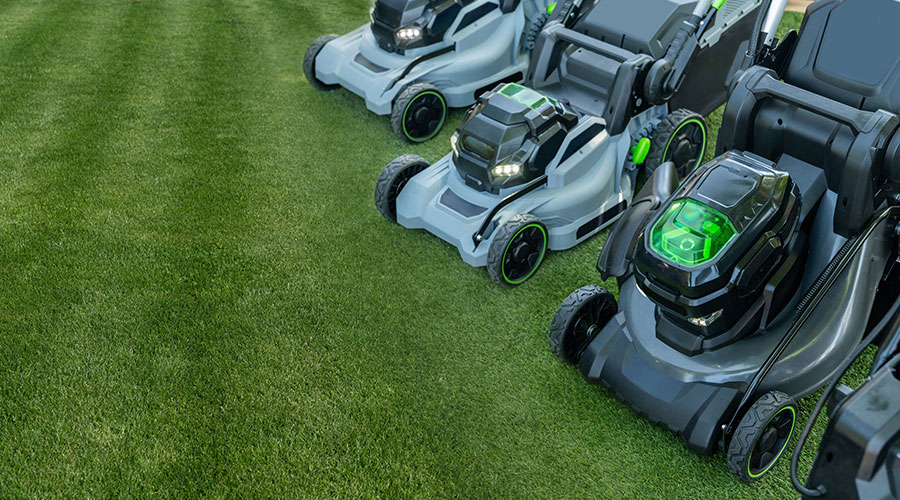Cordless Tools Come of Age
A new generation boasts longer run times and improved ergonomics
The first cordless tools appeared more than 10 years ago. Their batteries were notoriously short-lived, and the tools provided inadequate torque for professional applications. Since then, a range of technological improvements has led to a proliferation of cordless tools. Battery-operated power tools are taking an increasing share of the tool market, say manufacturers. The reasons are many, including increased run times and more powerful batteries.
Another reason involves the nature of maintenance. David Selby, cordless business unit manager for Milwaukee Electric Tool Corp., reduces the reason to a practical one.
“Particularly in maintenance situations, where workers may be moving from location to location, stringer cords can be a hassle,” he says. Christine Potter, cordless unit manager for DeWalt Power Tools, says another benefit of cordless tools is improved safety.
“I’ve spoken to managers in schools and commercial applications who prefer using cordless tools because there’s no cord for kids or office workers to trip over,” she says.
In addition to the practicality of cordless power tools, manufacturers also say that improvements in ergonomics and vibration damping control make cordless tools increasingly attractive.
Boosting Batteries
A once-common complaint about cordless tools is that they did not offer the run time or necessary power to fulfill varied maintenance applications. Potter says today’s batteries are up to three times more powerful than previous generations. Despite the power boosts, Selby isn’t sure users always need the amount of power they say they do.
“We’ve found that people tend to overestimate the amount of time they actually use a tool during the day,” he says. “For example, we’ve put timers on tools, [and] given them to contractors who tell us that they use a circular saw for three or four hours a day. They tell us, ‘We’re always using that tool.’ But we look at the timer when we get the tool back and discover than the tool only ran for a total or 10 or 15 minutes.”
So when measuring battery performance, Selby says, it is wiser to estimate run time in terms of the amount of work a cordless tool will perform.
“Because users often grossly overestimate time of use, we say things like ‘Our cordless saw cuts 150 2 by 4s on one charge,” Selby says.
But for all the inroads made in battery technology, David Smith, executive vice president at Metabo, says that some tools require too much power to be effective as cordless models. Cordless grinders are not well accepted yet, he says, mainly because the high motor speed drains batteries so quickly that it is not feasible to make a cordless grinder without attaching a heavy, large battery pack.
Vince Caito, Makita Inc.’s marketing communications manager, says other important aspects of battery performance relate to charging technology.
“You have to be careful not to overcharge,” he says. Overcharging is one culprit in batteries that develop memory. For a premium price, Makita offers new battery technology that uses a data chip in the battery and a CPU in the charger to prevent overcharging. The charger’s CPU analyzes the battery to determine how much power should go back into the battery, he says. For more on battery options, see the article below.
Ergonomics
Ergonomics have become increasingly important to tool manufacturers. While ergonomic-improvement efforts vary by manufacturer, all manufacturers focus upon improving tool handles. Smith says Metabo uses rubberized grips, which offer solid control, less slippage and help deaden vibration.
Handle designs are also improving. Smith cites handle positions on previous generations of circular saws.
“Most circular saws use rear-handle designs but some manufacturers also had top-mounted handles,” he says. “Not too long ago, we started to see both handle designs available on one tool. Manufacturers figured out that if they’re selling 100 rear-handle saws and 100 top-handle saws, they might as well put both types of handles onto one tool and sell 200 of them.” Such designs offer tool operators several grip options for reduced fatigue.
Smith says many manufacturers now offer right- and left-handed saw designs. In the drill and driver market, Smith says pistol-grip styles are disappearing, while the T-grip style is taking greater market share. The latter style offers users better balance, he says.
At Makita, designers focus on handle design, particularly crafting handles at the proper angle to prevent fatigue. Designers also work to reduce noise and vibration levels. On some tools, Makita uses double counterweights and isolated inner and outer housings to cut down on vibration.
Selby says Milwaukee Electric also uses soft-grip handles.
“We also use shaped handles with a reduced diameter, which cuts down on user fatigue,” he says. Dewalt conducts in-house tests to improve user comfort.
“Our dedicated ergonomics group does vibration analysis tests, plus weight and balance tests on our tools,” Potter says. “They also test tools with end users.”
The Search for Innovations
Innovations to cordless power tools vary by manufacturer, so finding the tool that best serves an operation’s maintenance needs might require shopping for features offered by certain manufacturers.
For example, Milwaukee Electric Tool offers reversible batteries, which can slide onto tool handles from the front or back. As a result, the tool has difference balance points.
“Reversible batteries change the handling characteristics of a cordless tool, an important consideration for overhead work or in hard-to-reach areas,” Selby says.
One of the company’s hatchet saws has a pivoting handle. When operators pivot the handle into a pistol grip style, it shortens the tool’s overall length.
Metabo recently introduced a cordless screwdriver with a spindle stop, which allows users to operate the tool like a manual screwdriver when the device is turned off — it’s an important consideration for finish work, Smith says. DeWalt recently incorporated ratcheting chucks and single-sleeve chucks on the company’s drills, which allows users to tighten bits more effectively than in previous generations of drills.
Changes Ahead
Manufacturers see several changes on the horizon for cordless tools.
"Tool-less blade changes are going to be the next big thing," Smith says. "It’s important for manufacturers to simplify for the end user, and developing tool-less blade changes mean that there’s one less thing for operators to worry about." Smith adds that tools will continue to get smaller, while still offering the same power. In some cases, available torque is improving, despite shrinking tool size. Selby agrees.
“Users seem very happy with the power output of current cordless tools,” he says. “Now they’re looking for lighter-weight tools.”
Finally, Dewalt’s Potter sees growth potential for cordless cutting tools and forecasts continuing changes in battery technology.
“Nickel metal hydride are the batteries of the future,” she says, adding that their run times are superior to current NiCad systems. She says battery manufacturers simply have to solve some nagging problems that are holding back NiMH technology.
Power Players: NiCad vs. NiMH
The biggest advent in battery technology for cordless tools came three years ago with the 2.4 amp-per-hour nickel-cadmium (NiCad) battery. David Selby, cordless business unit manager for Milwaukee Electric Tools, says the other major battery type — nickel metal hydride (NiMH) — has several benefits but also some drawbacks. David Smith, executive vice president at Metabo, doesn’t discount NiMH batteries as quickly.
“The biggest advantage of NiMH batteries is that users get more work per charge without extra weight,” he says.
Ultimately, this characteristic allows tool manufacturers to either build a battery pack that is the same weight and size as a NiCad battery but with longer run times or to build a smaller, lighter battery with the same power capacity as a NiCad battery.
NiMH batteries have several shortcomings. For now, Potter says, most manufacturers offer NiCad batteries because the deterrents to using NiMH batteries — namely, fewer recharges and performance that is hampered in cold weather — must be addressed before NiMH batteries gain wide acceptance. They also cost far more than their NiCad counterparts.
|
Related Topics:







